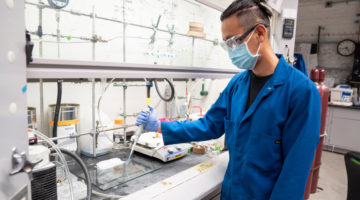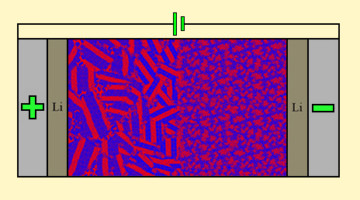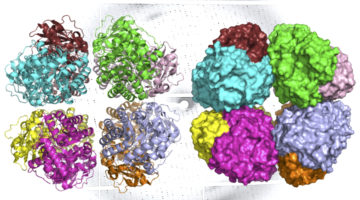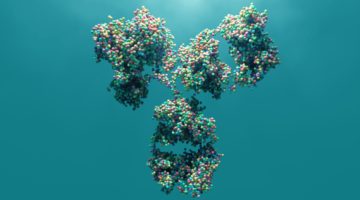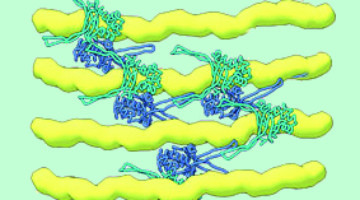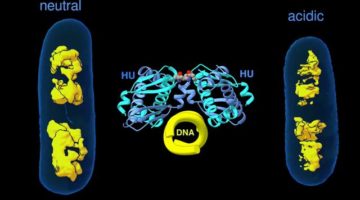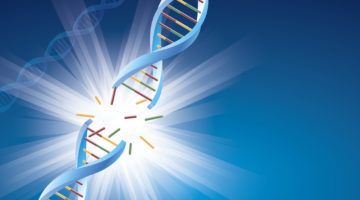A highly sensitive lateral flow assay—the same type of device used in home pregnancy tests—could be developed using pairs of rigid antibodies that bind to the SARS-CoV-2 nucleocapsid protein. SAXS data showed that a particular pair of monoclonal antibodies bound to the nucleocapsid protein very strongly and stably, in part due to the antibodies’ rigidity. Read more »
To Design Truly Compostable Plastic, Scientists Take Cues From Nature
Researchers have designed an enzyme-activated compostable plastic that could diminish microplastics pollution and holds great promise for plastics upcycling. The material can be broken down to its building blocks—small individual molecules called monomers—and then reformed into a new compostable plastic product. Read more »
Probing Composite Materials to Make Better Batteries
Researchers found that when an ion-conducting polymer composite is placed in an electric field, it forms ion-rich hotspots that continue to grow for hours after the field is removed. The study opens a new path to understanding the dynamic structure of composite materials for smaller, lighter batteries. Read more »![]()
![]()
Newly Discovered Photosynthesis Enzyme Yields Evolutionary Clues
Scientists have discovered a primitive form of rubisco, a photosynthesis enzyme that has helped shape life on Earth. Detailed information about its structure, determined using complementary techniques at the ALS, will help scientists understand how carbon-fixing organisms oxygenated the atmosphere and how modern plants evolved. Read more »
Study Finds ‘Missing Link’ in the Evolutionary History of Carbon-Fixing Protein Rubisco
Scientists discovered an ancient form of rubisco, the most abundant enzyme on Earth and critical to life as we know it. Found in previously unknown environmental microbes, the newly identified rubisco provides insight into the evolution of the photosynthetic organisms that underlie the planet’s food chains. Read more »
Providing New Technologies for Vaccine Development
Antigens can sometimes be attached to a protein scaffold to mimic the shape of a virus and elicit a stronger immune response. Scientists developed a method to design such proteins, and ALS data helped to visualize the atomic structure and determine the dynamics of the designed scaffolds. Read more »
How Proteins Remodel DNA in Bacteria under Stress
Multiscale, multimodal visualization techniques at the ALS enabled researchers to clarify how proteins remodel bacterial DNA in response to stressful environments. The discovery could lead to new strategies for controlling microbial behavior and, eventually, new ways to fight bacterial infections. Read more »![]()
![]()
Toughening Mechanisms in Carp Scales at the Nanoscale
Scientists have characterized carp scales down to the nanoscale, using the ALS to watch how the fibers in the scales react as stress is applied. The resulting insights provide inspiration for the design of advanced synthetic structural materials with unprecedented toughness and penetration resistance. Read more »![]()
![]()
Study Gains New Insight Into Bacterial DNA Packing
When bacteria are put in different environments, their genes start to adapt remarkably quickly because the proteins making up their chromosomes can pack and unpack rapidly. Researchers have now imaged this process at the molecular level, a discovery that could eventually enable scientists to develop strategies to control microbial behavior. Read more »
This Enigmatic Protein Sculpts DNA to Repair Harmful Damage
Scientists have discovered that a DNA-repairing protein performs its functions by first marking and then further breaking damaged DNA. The surprising findings have provided much-needed insight into how DNA repair works in healthy human cells, as well as how different mutations can translate into different diseases and cancer. Read more »
- « Previous Page
- 1
- 2
- 3
- 4
- 5
- 6
- …
- 8
- Next Page »

